|
 |
|
|
|
|
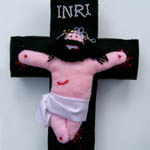
The Magnificent Seven
Anna Krenz
2005
|
 |
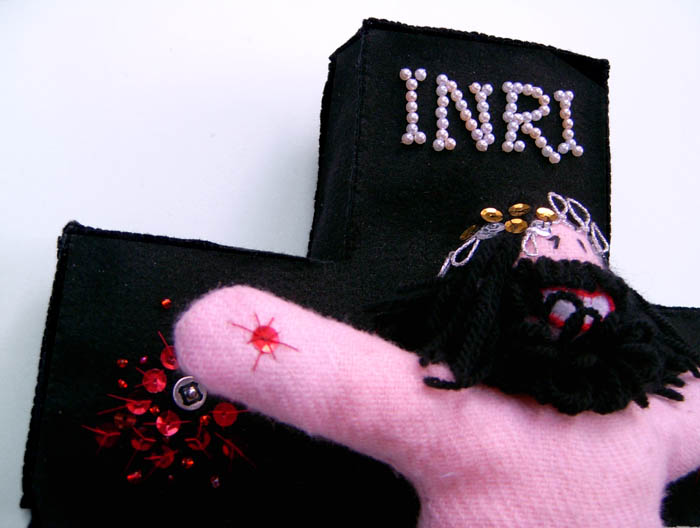 |
|
|
 |
|
Agatha had her breasts chopped off, Jeanne was burned alive, Lucy had her eyes ripped out and her heart was stabbed with a sword. Florian was drowned in a river, Sebastian was shot with arrows, Adalbert was decapitated.
„The Magnificent Seven” is a series of puppets of Christian martyrs, shown in the moment of their cruel deaths. Christian tradition – paintings, sculptures and legends - is full of pictures of physical suffering as a punishment for religious faith. In our times these images may seem merciless, but the perception of contemporary people has grown used to the sight of blood over flown in the name of God. Although today the conflicts between religion and images have escalated uncontrollably. Images of cruelty in mass culture, without religious context, are not tolerated easily and often censored. Where is the difference?
„The Magnificent Seven” are soft and sweet puppets for nice little girls. The terror of suffering and death slips away from reality and becomes an abstract idea which can be accepted due to the tradition of the Catholic Church.
In Middle-Ages people have been selling relics of holy martyrs, churches have been ordering frescos and paintings showing the lives of saints. Today there are cheap plastic figures of heroes of faith produced in China. Commercialisation of the objects of cult one can observe in the western culture lasts since centuries, even though it is against the principles of religion. „The Magnificent Seven” are the heroes of faith for sale.
Anna Krenz
|
|
|
Saint Agatha (235, † 251)
Saint Agatha was born in Sicily of rich and noble parents. She was promised to her parents before her birth, and consecrated from her earliest infancy to God. Quintanus, who governed Sicily, had heard the rumor of her beauty and wealth, and he made the laws against the Christians a pretext for summoning her from Palermo to Catania, where he was at the time. He offered her marriage but she refused. She was then imprisoned for a whole month under charge of an evil woman. When Quintanus turned from passion to cruelty, and cut off her breasts. In the night she had a vision of Saint Peter who healed her wounds. Later she was rolled naked upon potsherds and finally died.
|
 |
|
|
Saint Florian († 304)
Florian lived in the time of the Roman emperors Diocletian and Maximian, and was commander of the imperial army in eastern Bavaria, Germany. In addition to his military duties, he was also responsible for organizing firefighting brigades.The Roman regime sought to eradicate Christianity, and sent Aquilinus to persecute Christians. When Aquilinus ordered Florian to offer sacrifice to the pagan Roman gods in accordance with Roman religion, he refused, and cheerfully accepted the beatings of the soldiers, who used clubs, spikes and fire to torture him. He was executed by drowning in the Enns River with a stone tied around his neck.
|
 |
|
|
Jesus Christ (4v.CHR, † 30n.CHR)
Jesus of Nazareth was born in Betlehem and died in Jerusalem. The New Testament describes Jesus as the Son of God and Saviour. As the child of a devotional jewish family he became a carpenter. Jesus became a wandering teacher and was famous for healing and wonders. Romans did see him as a rebel and a threat to the Roman Empire, as well as did not appreciate his miracles which were seen as magic. His opponents have conspired against him and betrayed him. Jesus was taken to roman court, sentenced and tortured. He had to carry a wooden cross to the Golgotha Hill where the soldiers hammered iron nails into his feet and palms. Jesus was crucified and died.
|
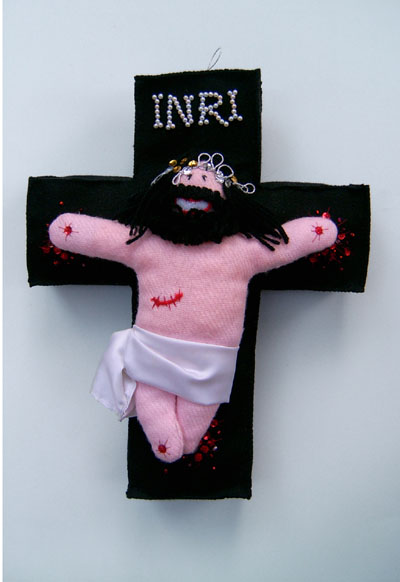 |
|
|
Saint Joan of Arc (1411-1412, † 1431)
Born at Domrémy, a village in Champagne, probably on 6 January, 1412. Her parents were poor small peasant farmers. At the age of thirteen Joan first became conscious of that manifestation, which she afterwards came to call her "voices" or her "counsel." Joan led the French army to several important victories during the Hundred Years' War, claiming divine guidance, and was indirectly responsible for the coronation of King Charles VII. She was captured and sold by John of Luxembourg to the English. She was kept in prison, in an iron cage, chained by the neck, hands, and feet. Then she was tried by an ecclesiastical court that convicted her of heresy and witchcraft. She was sentenced and on May 30th 1431 she was burned on the market square in Rouen. After death her ashes were thrown into the Seine.
|
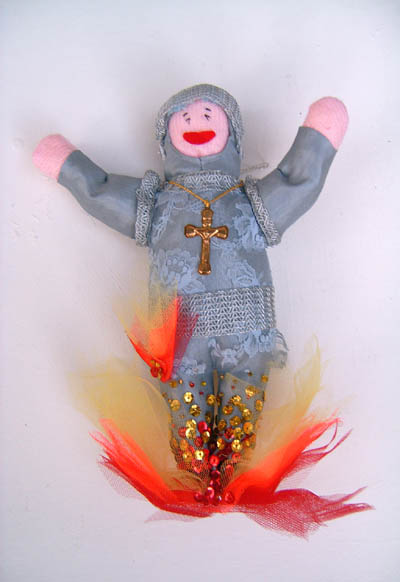 |
|
|
Saint Lucia von Syrakus (281, † 304)
Saint Lucy was a young Christian maiden of Syracuse in Sicily. She had already offered her virginity to God and refused to marry, when her mother pressed her to accept the offer of a young pagan. The mother was afflicted afterwards for several years by an issue of blood, and all human remedies were ineffectual. Lucy and her mother made a journey to Catania, to the tomb of Saint Agatha who appeared in vision to Saint Lucy, foretelling her mother’s recovery and Lucy’s future martyrdom. Lucy’s mother was healed and in her gratitude she allowed her daughter to distribute her wealth among the poor, and to conserve her virginity. The young man who had sought her hand in marriage denounced her as a Christian during the persecution of Diocletian. The executioners who would have taken her to a house of ill fame were unable to move her. The exasperated prefect gave orders to attach her by cords to harnessed bulls, but the bulls, too, did not succeed, and he accused her of being a magician. A fire kindled around her did her no harm, though she was covered with resin and oil. When a sword was plunged into her heart Saint Lucy died.
|
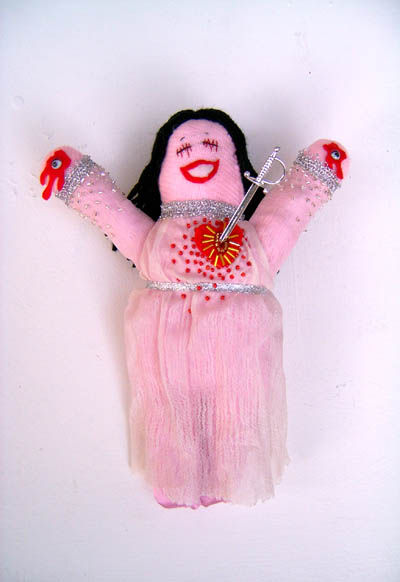 |
|
|
Saint Sebastian († 288)
Born at Narbonne, Sebastian came to Rome about the year 284 and entered the lists against the powers of evil. Saint Sebastian was an officer in the Roman army. As he converted to Christianity he continued to labor at his post of danger until he was betrayed by a false disciple. He was led before Diocletian and, at the emperor’s command, pierced with arrows and left for dead. A widow called Irene found his body and cured him. Of his own accord he went before the emperor and conjured him to halt the persecution of the Church. Again sentenced, he was beaten to death by clubs in the Circus Maximus. His dead body was thrown into Cloaca Maxima near the Tiber river.
|
 |
|
|
Saint Adalbert from Prague
(939, † 997)
Born of a noble Bohemian family, Adalbert was a bishop. In 996 Adalbert went to Prussia for the evangelic mission. Polish king Bolesław Chrobry send soldiers with him. In 997 the bishop and his followers - including his half-brother Radim entered Prussian territory and went along the Baltic Sea coast to Gdańsk. It was a standard procedure of Christian missionaries to try to chop down sacred oak trees, which were worshipped and the spirits who were believed to inhabit the trees were feared for their powers. When they did not heed warnings to stay away from the sacred oak groves, Adalbert was executed – he was beaten and his head was chopped off.
|
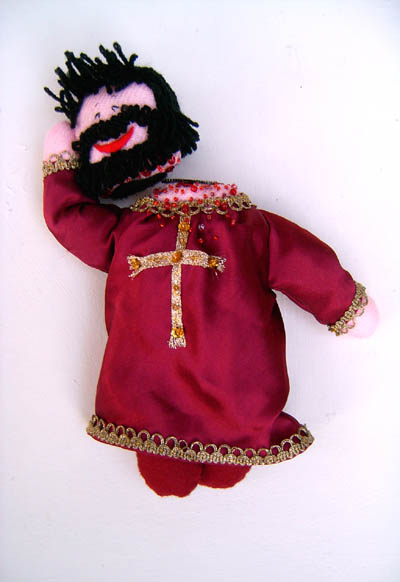 |
|
|
| Project exhibited at: Supermarket Sztuki V, 1st Biennal of Young European Art, Gallery Program, Gallery DAP, Warsaw, Poland, 2005; ON Gallery, Poznań, Poland, 2006; 3. Berliner Kunstsalon, Berlin, Germany, 2006; Awangarda BWA Galleries, Wrocław, Poland, 2007; 1. Internationale Push-Art Berlin (Patin: Tanja Dückers), Volksbühne, Berlin, Germany, 2007; „Monkeys and Saints” exhibition, Gallery Myymälä2, Helsinki, Finland, 2008. |
|
|
|
|
|
|
|
|
All rights reserved, Copyrights by Anna Krenz®
|
|